 In our latest Q&A, we speak with RAIN Alliance’s Head of Regulatory Affairs, Josef Preishuber-Pflügl, discussing what the growth of UHF RFID means for the RAIN ecosystem, and how stakeholders across Europe can benefit from the implementation of the upper frequency band across an increasing number of countries.
In our latest Q&A, we speak with RAIN Alliance’s Head of Regulatory Affairs, Josef Preishuber-Pflügl, discussing what the growth of UHF RFID means for the RAIN ecosystem, and how stakeholders across Europe can benefit from the implementation of the upper frequency band across an increasing number of countries.
1. What is the upper European RAIN frequency band?
The radio spectrum range used for RAIN has historically been spread between 860 – 960 MHz. A narrowed band of 915 – 921 MHz was set up in Europe in 2018 to offer performance benefits including doubling communication speeds, support for low power devices, and up to 40% longer range tag reading. This also made product, reader and system design easier, helping streamline time to market for new solutions.
2. Which countries are using the upper band?
The number of European countries adopting the upper frequency band continues to grow. An additional 10 countries recently announced implementation of the upper band, with a total of 35 nations now making it available for use. For the few remaining, clarification is ongoing, and only Germany, Greece and the Netherlands currently continue to solely use the lower frequency band, primarily as the higher band has already been allocated for military use.
3. What is the significance of this growing adoption?
As more countries implement the upper European RAIN frequency band, the addressable marketplace for RAIN also grows. More countries using the upper RAIN frequency band is good news for supply chains operating there, as the band enables enhanced performance. Companies can benefit from double communication speed and easier global product, reader and system design, which supports low-power, and up to 40% longer-range tag reading. This provides a way to streamline time-to-market for new solutions, further improve their business operations and drive efficiencies in new and exciting ways.
4. What does this mean for the wider RFID ecosystem?
Increased implementation of the upper RAIN frequency band across Europe aligns with the wider trend of growth in RAIN deployments. Tag chip shipments continue to rise, reaching a record volume of 45.5bn units in 2023 – a third of which were sold in Europe. This number is only expected to continue its upward trend, expected to reach 115bn units by 2028.
It’s not just adoption and implementation of RAIN that are on the rise, so are the use cases for the technology. One example of this is the value that RAIN can deliver to the EU’s Digital Product Passport. RAIN tags can provide vital information throughout a product’s lifecycle to inform how it is used, reused and dealt with at end-of-life. The European upper frequency band can elevate these functionalities further, helping deliver a more sustainable future.
5. What’s next for the upper European band?
We are already seeing the rapid diversification of applications for the upper band across adopter countries. As this continues, it’s crucial that regulation and certification programs keep up to ensure RAIN deployments remain interoperable, functional and secure.
The RAIN Alliance Radio Regulations Advisory Council is deeply engaged in global radio regulations to ensure members are represented in discussions on crucial regulatory developments. Join the Alliance today to participate in this exciting work.
